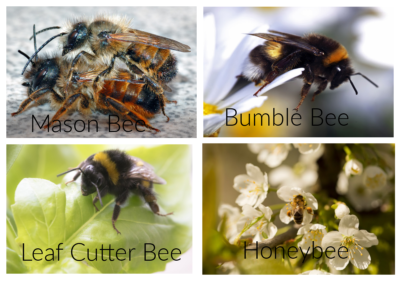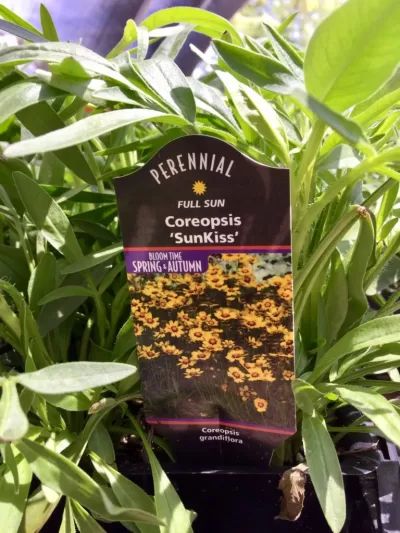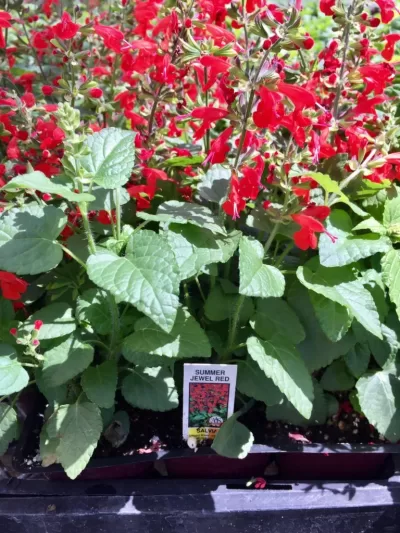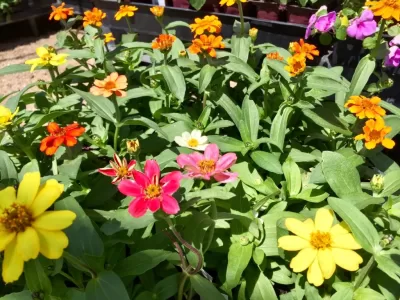When we think about planting our gardens, whether we’re planting flowers, trees, or cacti, we tend to focus on how things will look when our plants bloom and mature. If we’re planting vegetables, we’re anticipating how delicious the food will taste. One thing we probably are not picturing is what kinds of pollinators our plants need.
But without pollinators, our gardens would not thrive or produce. Eventually, they would cease to exist! That’s because without pollination most plants cannot reproduce or set seed. There are many types of pollinators—and we need them all—but in this blog, we’re going to focus on the largest group of pollinators: bees.
According to the Earth Day Network, 35 percent of food crops around the world depend specifically on bees for their pollination. Many people assume that honeybees pollinate every flower or flowering crop. But honeybees are just one of many bee species that pollinate.
In Arizona alone, there are roughly 1,300 types of bees and over half of those species live in our general area! Biologists have identified some 600-700 different species of bees that are native to the Sonoran Desert region. Native bees are species that have evolved over time to pollinate native plants in that area. Some types of bees are native to more than one area but each species of that type of bee has adapted to the native plants in the area where they live.
In the Yuma area, native bees such as bumblebees, mason bees, and leafcutter bees are just a few of the bees we need to pollinate our garden plants and food crops.

Yuma Pollinators
Like honeybees, bumblebees also live in large colonies. These large, fuzzy-looking bees scare many people because of their size and loud buzzing, but bumblebees are fairly placid, and unlike honeybees, these gentle giants rarely sting. They also pollinate differently from honeybees. Bumblebees are one of the “buzz” pollinators. To do this, a bumblebee clings to the anther of a plant and then uses its thoracic muscles to vibrate the blossom. The vibrations cause pollen to coat the bee’s hairy body. The bee then combs the pollen into “baskets” on its legs to carry it back to the hive.
Mason bees are much smaller, but like the bumblebee, mason bees rarely sting. And they are superior pollinators. The USDA says that about 625 mason bees (375 males and 250 females) can do the work of two hives of honeybees—that’s about 120, 000 honeybees! Unlike honeybees and bumblebees, mason bees don’t have baskets on their legs. Instead, they carry nectar and pollen are their undersides. They are solitary bees that do not produce honey but play an important role in pollinating orchards and early spring plants before other bees are active in the early spring.

Leaf Cutter Bee Damage
If you’ve ever found round or half-round holes in the leaves of one of your plants or citrus trees, there’s a good chance it was made by a leafcutter bee. The bee doesn’t eat the leaf. It uses the small piece it cut to build its home. And don’t worry, this bee isn’t destructive; it doesn’t cut more than it needs. Leafcutter bees are better pollinators of alfalfa flowers than honeybees although they pollinate many other plants as well. Like mason bees, they carry pollen on their undersides and are solitary bees that nest in small holes in softwood or the hollows of pithy plant stems.
A few plants that help support our native bee species include: verbenas (any color), native mallows (any color), coreopsis, several salvias, sages, zinnias, hollyhocks, and lavender. Native bees are also attracted to most herbs including mint and all varieties of basil.

Verbena

Cape Mallow

Coreopsis

Salvia

Sage

Zinnia

Hollyhock

Lavender
As noted above, there are many types of native bees in the Yuma area.
If you’d like to learn about more of them, check out this two-page pdf created by the Pollinator Partnership, Arizona Cooperative Extension, and the Yuma College of Agriculture and Life Sciences. I downloaded it to my desktop for handy reference.
https://www.pollinator.org/pollinator.org/assets/generalFiles/AZ_bee_guide_FINAL.pdf
See you in the Garden!
